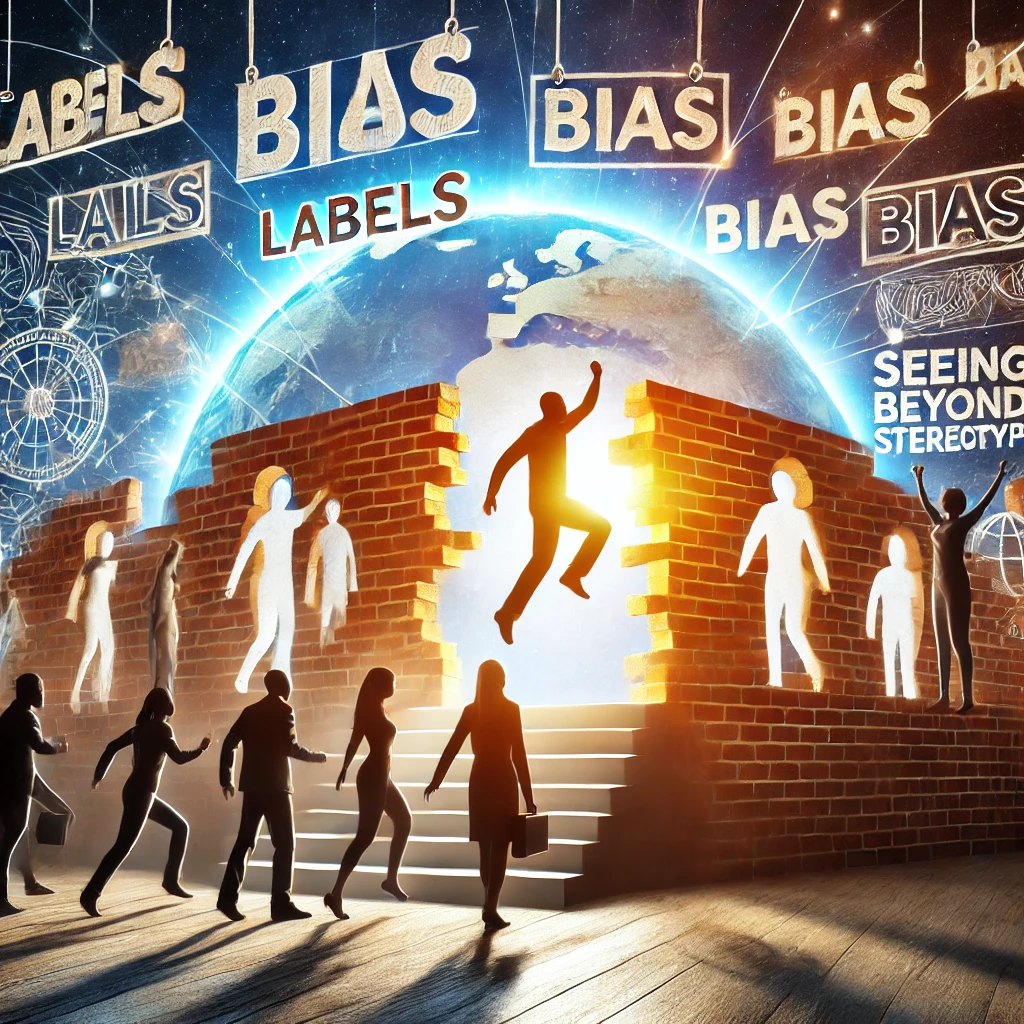In today’s interconnected world, diversity is everywhere, from workplaces and schools to online communities. Yet, despite this exposure to different cultures, perspectives, and lifestyles, stereotypes and biases persist, often shaping how we perceive and interact with others. These biases, whether conscious or unconscious, limit our ability to connect genuinely with others and hinder the creation of inclusive environments.
Learning to see people beyond stereotypes is essential for personal growth, stronger relationships, and a more equitable society. This article explores what biases are, their impact, and actionable steps to overcome them.
What Are Stereotypes and Biases?
Stereotypes are generalized beliefs about a particular group of people, often oversimplified and not representative of individual differences. Biases, on the other hand, are the attitudes or preferences we hold, which can be either positive or negative, influencing our thoughts and actions.
Types of Bias
- Implicit Bias:
Unconscious attitudes or stereotypes that affect our decisions and actions without us realizing it.
Example: Assuming someone’s leadership skills based on their gender. - Explicit Bias:
Conscious beliefs and attitudes that people are aware of and may openly express.
Example: Openly stating that one group is superior to another. - Confirmation Bias:
The tendency to seek out information that supports pre-existing beliefs while ignoring contradictory evidence.
Example: Only following news sources that align with your views on a particular group.
The Impact of Bias and Stereotypes
Biases and stereotypes don’t just affect individuals—they have far-reaching consequences on society as a whole.
1. Limiting Opportunities
When people are judged based on stereotypes, they may face discrimination in education, employment, or social interactions. This limits their ability to reach their full potential and perpetuates inequality.
Example:
A study found that job applicants with “ethnic-sounding” names were less likely to receive interview callbacks compared to those with “traditional” names, despite having identical resumes.
2. Damaging Relationships
Biases create barriers to genuine connections. Misjudging someone based on stereotypes can lead to misunderstandings, mistrust, and fractured relationships.
3. Reinforcing Inequality
When biases influence policies, practices, or institutional systems, they can reinforce systemic inequality. This is particularly evident in areas like law enforcement, healthcare, and education.
How to Overcome Bias and See People Beyond Stereotypes
Overcoming bias is not an overnight process. It requires self-awareness, intentional effort, and a willingness to challenge long-held beliefs. Here are practical steps to start seeing people as individuals rather than through the lens of stereotypes:
1. Acknowledge Your Biases
The first step in overcoming bias is recognizing that everyone has biases. Acknowledging them doesn’t mean you’re a bad person—it means you’re human.
Action Step:
Take an implicit bias test, such as those offered by Harvard’s Project Implicit, to identify areas where bias might influence your thinking.
2. Educate Yourself
Bias often stems from ignorance or lack of exposure to different perspectives. Educating yourself about other cultures, traditions, and experiences can help break down stereotypes.
Action Step:
Read books, watch documentaries, or attend cultural events to gain a broader understanding of the world.
3. Challenge Stereotypes
Actively question stereotypes you encounter in everyday life, whether in media, conversations, or personal thoughts.
Action Step:
When you catch yourself making an assumption about someone, pause and ask yourself: “Is this based on facts or a stereotype?”
4. Build Genuine Relationships
One of the most effective ways to overcome bias is by building relationships with people from diverse backgrounds. Personal connections help humanize those who might otherwise be reduced to stereotypes.
Action Step:
Seek out opportunities to interact with individuals who are different from you, whether through work, community events, or social groups.
5. Practice Empathy
Empathy involves putting yourself in someone else’s shoes and understanding their experiences without judgment. It’s a powerful tool for breaking down biases.
Action Step:
Engage in active listening during conversations and try to understand the other person’s perspective, even if it challenges your own beliefs.
6. Speak Out Against Bias
If you witness biased behavior or stereotyping, don’t stay silent. Addressing these issues can help create a culture of accountability and inclusion.
Action Step:
Use respectful language to challenge stereotypes when they arise, whether in casual conversations or professional settings.
7. Diversify Your Media Consumption
The media we consume plays a significant role in shaping our perceptions of others. By diversifying your media intake, you can expose yourself to more balanced and authentic representations.
Action Step:
Follow social media accounts, podcasts, and news outlets that showcase diverse voices and perspectives.
Benefits of Overcoming Bias
Learning to see people beyond stereotypes has far-reaching benefits, not just for individuals but for society as a whole.
1. Stronger Relationships
When you approach people without bias, you’re more likely to build meaningful connections based on trust and mutual respect.
2. Greater Creativity and Innovation
Diverse teams are more innovative because they bring different perspectives and ideas to the table. Overcoming bias allows you to appreciate and harness this diversity.
3. A More Inclusive Society
Challenging stereotypes helps break down systemic barriers and fosters an environment where everyone has an equal opportunity to succeed.
The Role of Organizations in Combating Bias
While individuals play a crucial role in overcoming bias, organizations also have a responsibility to foster inclusive environments.
1. Diversity and Inclusion Training
Many companies now offer training programs to help employees recognize and address biases.
2. Inclusive Hiring Practices
Organizations can implement blind recruitment processes to reduce bias in hiring decisions.
3. Accountability Mechanisms
Establishing clear policies against discrimination and creating avenues for reporting bias can help ensure a fair workplace.
Conclusion
Overcoming bias and seeing people beyond stereotypes is a journey that requires effort, education, and empathy. By recognizing our own biases, challenging stereotypes, and building genuine connections, we can foster a more inclusive and equitable world. Whether at an individual or organizational level, the steps we take today can create a future where everyone is valued for who they are—not the stereotypes that define them.
Stay tuned to our website for more insights and practical tips on promoting inclusion and understanding in a diverse world.
